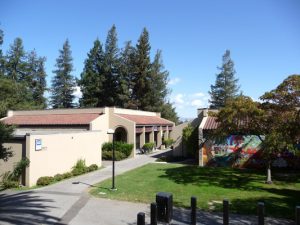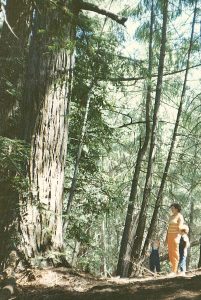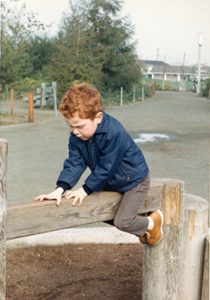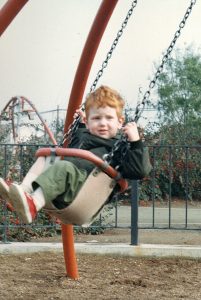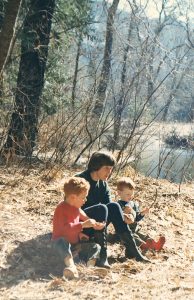Archive for May, 2017
An arithmetical awakening
From my old black filing cabinet, a letter to my parents:
Cupertino CA, 18 August, 1967
I have enrolled for an evening class. There is a very new (actually still under construction) junior college about 5 min. drive away, so have decided to prove or disprove a long-held theory of mine that I could have done maths if I had been given the chance.
In my New Zealand high school in the 1950s, academic-streamed students were divided into two programs: languages/arts or science/maths. Since I was a girl, with strong writing skills, the choice was obvious to the decision-makers. I was given a year of basic arithmetic with some beginning algebra thrown in, and that was it. I’d struggled with long division in elementary school, and learned math tables by rote, as everyone did. In college I infuriated my math student friends by continually asking “Why?” when they tried to explain math concepts. “That’s just the rules,” I was told.
The class I took at the brand-new De Anza College in Cupertino was titled “Structure of Arithmetic”. It had a subtitle: “For Parents Who are Confused about the New Math.” New Math was a short-lived school curriculum in the 1960s that emphasized understanding the rule-systems that underlie numbers, writes Fred Martin, computer science professor at University of Massachusetts Lowell, blogging on the Computer Science Teachers Association site. He remembers it from personal experience and loved it. I learned that the decimal system is arbitrary and numbers could be expressed in any base. That was fascinating. Of course, I was the kid who learned his times tables for fun.
A Wikipedia overview notes:
Parents and teachers who opposed the New Math in the U.S. complained that the new curriculum was too far outside of students’ ordinary experience and was not worth taking time away from more traditional topics, such as arithmetic. The material also put new demands on teachers, many of whom were required to teach material they did not fully understand. Parents were concerned that they did not understand what their children were learning and could not help them with their studies. In an effort to learn the material, many parents attended their children’s classes. In the end, it was concluded that the experiment was not working, and New Math fell out of favor before the end of the decade, though it continued to be taught for years thereafter in some school districts. New Math found some later success in the form of enrichment programs for gifted students from the 1980s onward.
In a New York Times essay on the politics of math education, Carnegie Mellon historian Christopher J. Phillips writes:
Debates about learning mathematics are debates about how educated citizens should think generally. Whether it is taught as a collection of facts, as a set of problem-solving heuristics or as a model of logical deduction, learning math counts as learning to reason.
I was excited about the prospect of learning how the rules of arithmetic worked. Another motivation for taking the course was that I had a four-year-old son who was already showing signs of mathematical genius, and I knew I would soon be called upon to help him with homework. In a 2 Nov. 1967 letter I wrote:
The math course has already been useful in giving me a clearer idea of basic math concepts to help David. That child is incredible. For instance, we had a very interesting discussion at breakfast this morning on relative proportion, and I scarcely had to show him how to divide numbers into unequal proportions, e.g., 2 to 1, then subtract from each in such a way that the proportion remained the same.
I did well in the class. Receiving an A in Structure of Arithmetic was a huge boost to my self-esteem. More confident of my analytical skills, I went on to a satisfying career as a writer, editor and business systems analyst. The four-year-old grew up to be a computer science professor. I recently offered to copy edit the manuscript of his book on computational geometry. Though I didn’t have the skill to check his math, I was pleased that I could follow the logic of his argument. I even found a few typos.
In Praise of Parks
Having spent all their little lives in a place where parks had prim Keep Off The Grass signs and irate men in bowler hats with sticks enforced The Rules, my children were enchanted to discover the parks and playgrounds of their new home.
In the 1967, when we arrived in California from England, California State Parks was going through a huge expansion. Appropriations from the General Fund and a 1964 recreation bond provided well over a hundred million dollars for land acquisition and development. The government budget analysis for 1967 comments:
In the immediate future, the most pressing need of the state park system will be to provide funds for access and minimum development to enable the public to use lands now owned or currently being acquired. The existing state park system has a potential for development of about four times that of existing facilities.
With an expanding population, local governments in the Santa Clara Valley were also opening new parks and playgrounds as rapidly as they could. It was a fine time to be kids. They had their choice of playgrounds within easy driving distance: the one with the great swings, or the one with the good bars to climb on?
Cooking out at a forest park was one of our favorite activities. We bought a cheap little hibachi, loaded up a picnic and were off to explore.
At weekends, if the weather was hot in the valley, we might go over the Santa Cruz Mountains to the beach, remembering to take warm jackets since the fog was likely to roll in. Again choices, choices: Pescadero State Beach, or San Gregorio, or Half Moon Bay, Natural Bridges, Seacliff, Manresa…? Well before the California Coastal Act of 1976 declared that the permanent protection of the state’s natural and scenic resources is a paramount concern to present and future residents of the state and nation and that it is necessary to protect the ecological balance of the coastal zone and prevent its deterioration and destruction, the beach parks in our part of the state were already a beloved treasure.
Looking back, I recognize how innocent we were about land use politics, environmental pollution issues, climate change. Now more than ever, those parks and beaches, and the creatures living in them, need our support.

